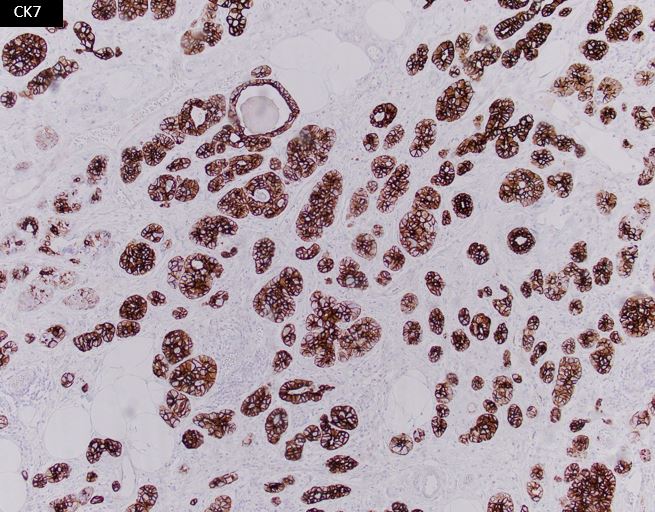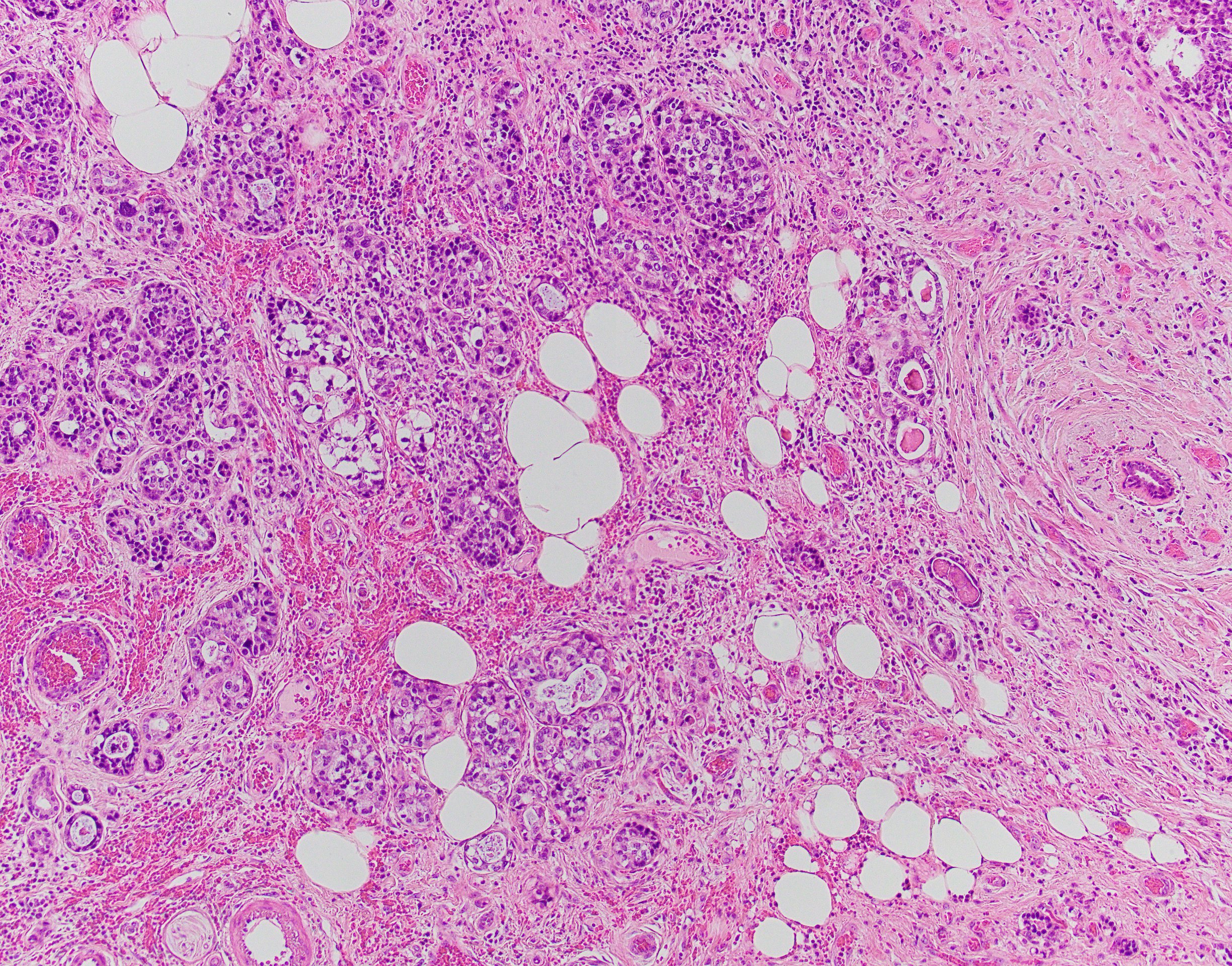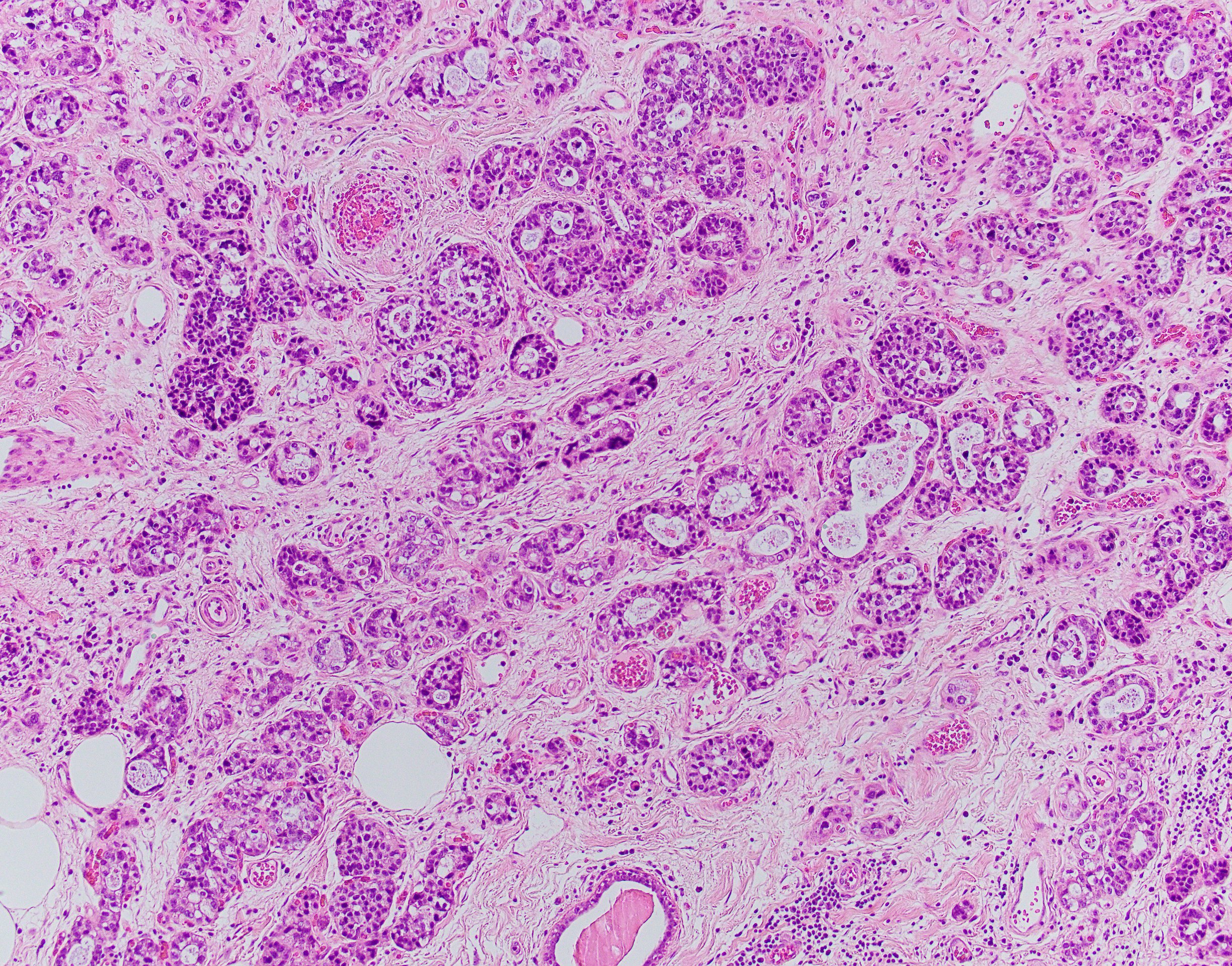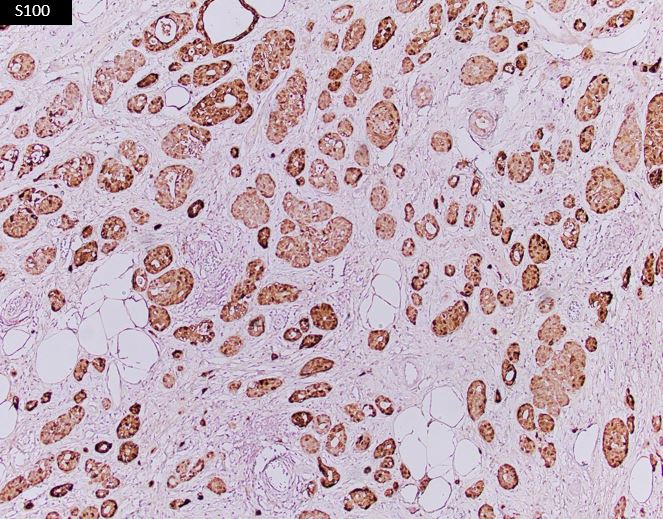Case History
A 75-year-old woman presents with a 3 cm breast mass, undergoes lumpectomy. The neoplastic cells are positive for CK7, S100, and lysozyme.
What is the diagnosis?
- Secretory carcinoma
- Micrograndular adenosis
- Acinic cell carcinoma
- Apocrine carcinoma



Acinic cell carcinoma (ACC) is a rare histological type of malignant epithelial neoplasms characterized by widespread acinar cell-like differentiation.
The ACC of the breast was first described in 1996 by Roncaroli et al. The histological pattern of these cases is predominantly solid with a microglandular structure, with associated cystic or/and papillary components.
ACC is characterized by serous acinar differentiation with zymogen-type cytoplasmic granules. The immunohistochemical profile of breast Acinic cell carcinoma shares many features with Acinic cell carcinoma of the salivary glands, with frequent expression of GCDFP-15, S-100, and a-1-Antichymotrypsin, as well as PAS-D positivity.
The differential diagnosis are microglandular adenosis and granular cell carcinomas (apocrine carcinomas, secretory carcinoma, oncocytomas and neuroendocrine carcinomas)
Less than 50 cases of breast ACC have been reported in the English-language literature. The prognosis of ACC of the breast appears to be good, even with reports of recurrence and metastasis.
https://pubmed.ncbi.nlm.nih.gov/24859406/
DOI: 10.1016/j.ijsu.2014.05.004
